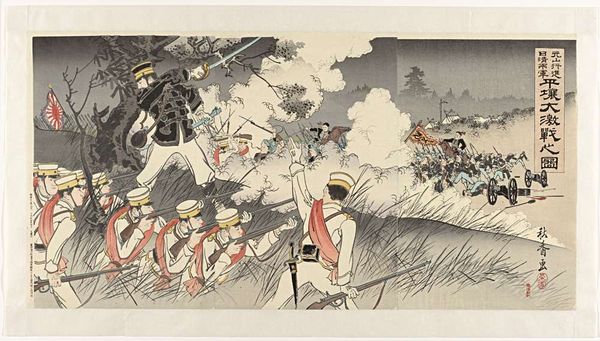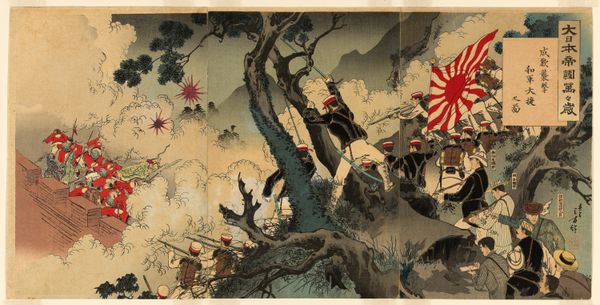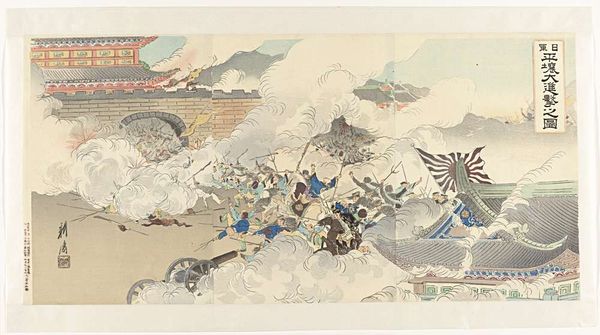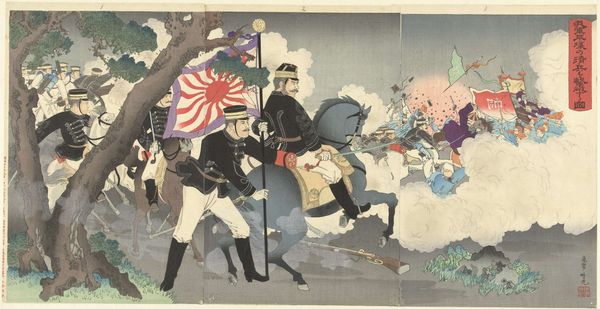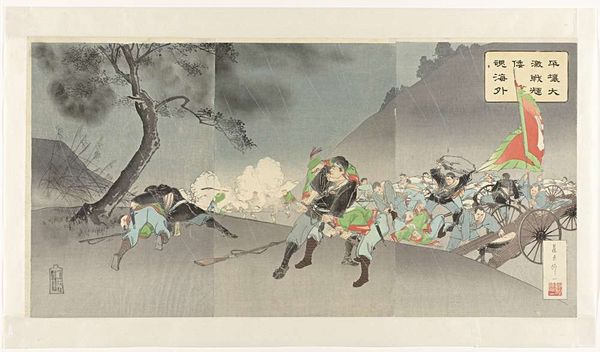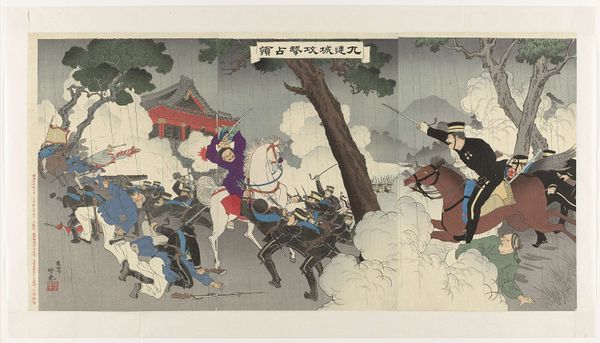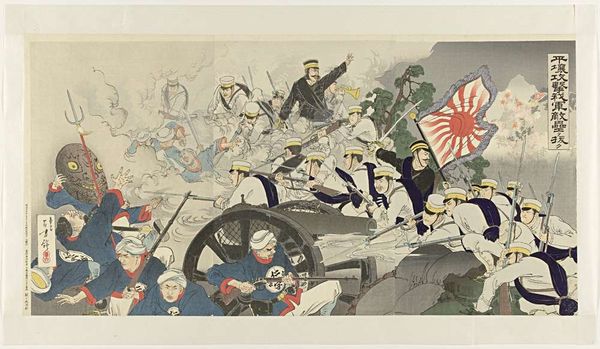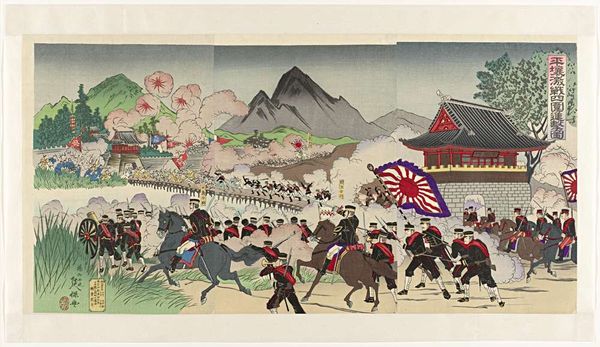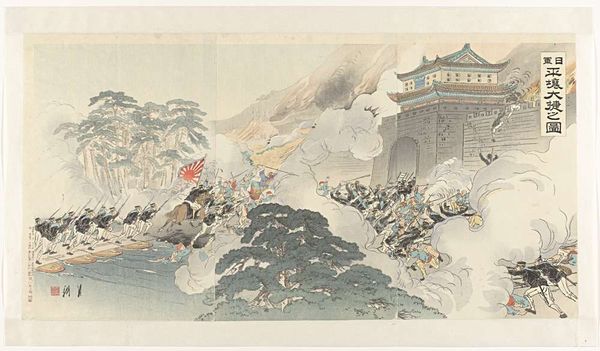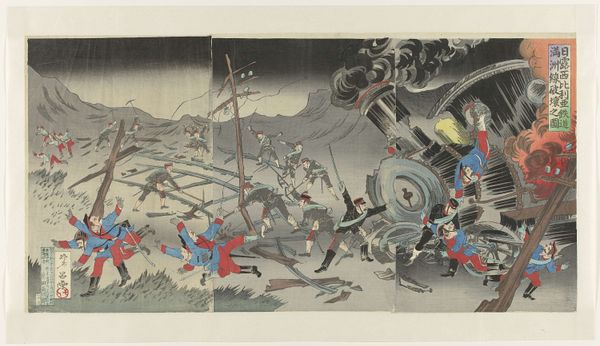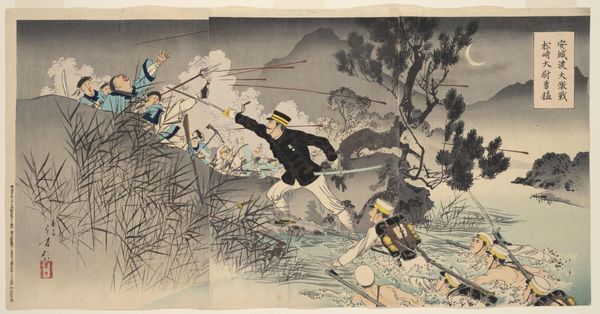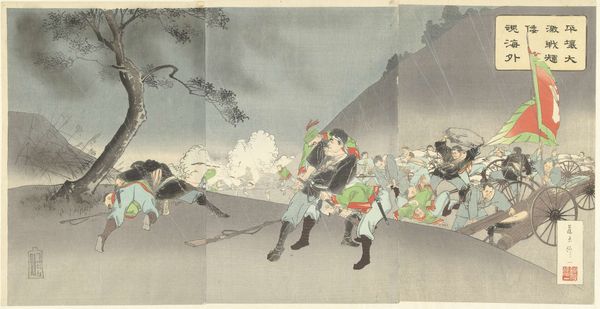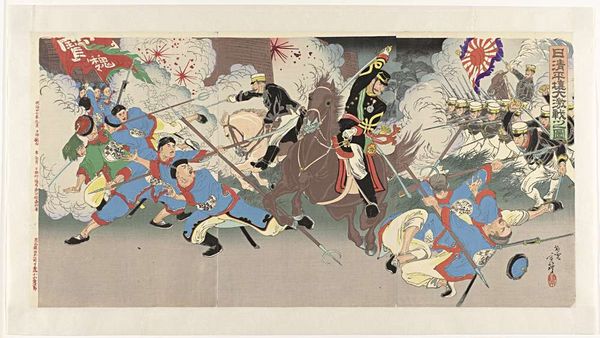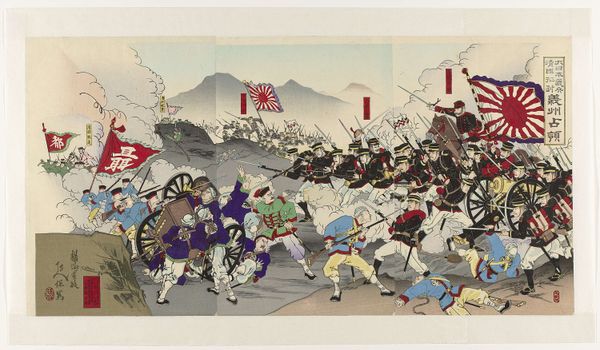
De terugtrekkende vijand bij Jinzhou tijdens de Chinees-Japanse Oorlog 1894
0:00
0:00
Dimensions: height 365 mm, width 734 mm
Copyright: Rijks Museum: Open Domain
Editor: This is Ogata Gekko’s "The Retreating Enemy at Jinzhou During the Sino-Japanese War," created in 1894. It's a mixed media piece, including ink and watercolor, currently residing at the Rijksmuseum. I'm struck by the energy; the composition is so dynamic! How do you interpret this work, considering the period it was created in? Curator: Absolutely, and that energy is quite deliberate. What strikes me is how this ukiyo-e print, while seemingly depicting a glorious battle, must be understood as propaganda. It portrays the First Sino-Japanese War, and it's crucial to examine it within the context of Japanese imperialism and its effect on Asian identity and cultural relationships. How does viewing it as propaganda, shaping public perception of war, change your initial reading of the piece? Editor: That's a fascinating point. It definitely shifts my perspective. I was focused on the dynamism, but now I see the potential manipulation, especially considering how the artist chose to portray the Japanese soldiers so heroically while the opposition is lost in the smoke and haze. It definitely seems biased in favor of the Japanese. Curator: Precisely. We need to critically engage with its nationalistic undertones, consider how it functioned to consolidate support for the war effort, and unpack the power dynamics at play in its creation and consumption. Does this perspective help you see other, perhaps more troubling aspects of the image now? Editor: I think so. The seeming glorification of the battle takes on a much darker hue. I appreciate how your understanding reveals its complex and potentially insidious nature beyond just a striking visual representation of warfare. Curator: And that’s the point, isn’t it? It’s not enough to simply admire the artistic skill. We must unpack its social and political meaning. Editor: Right. It definitely gave me a new angle to analyze beyond aesthetics. Curator: Me too. There’s so much to think about in this image, still, despite what we’ve learned!
Comments
No comments
Be the first to comment and join the conversation on the ultimate creative platform.
